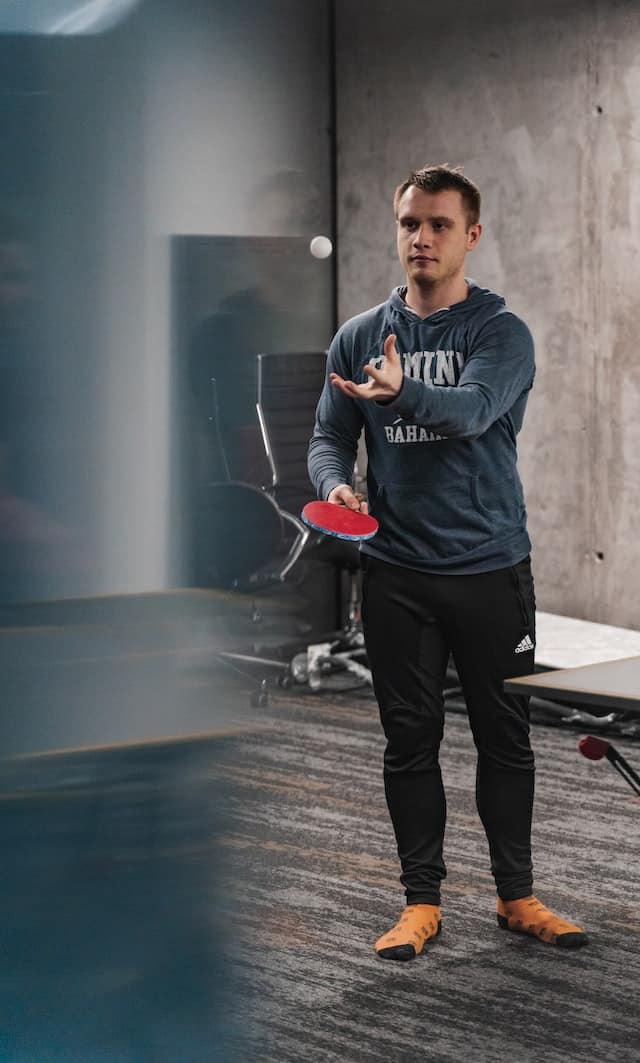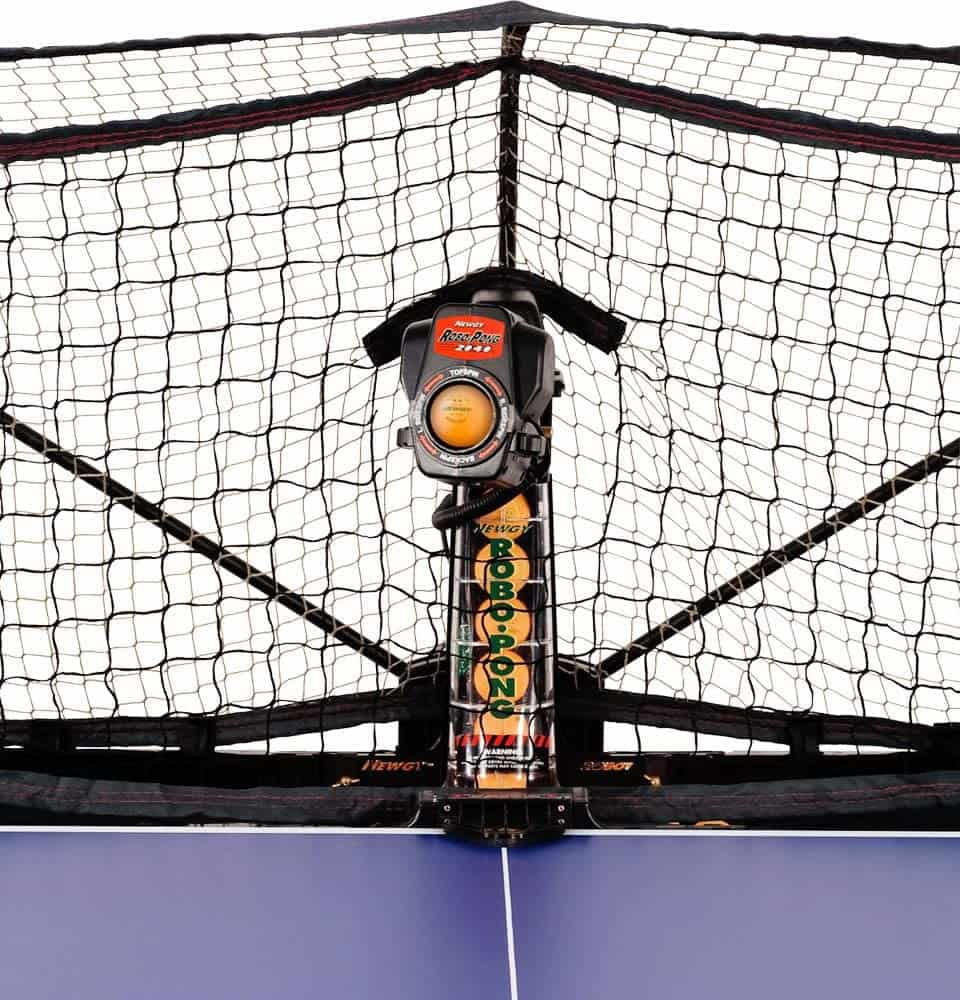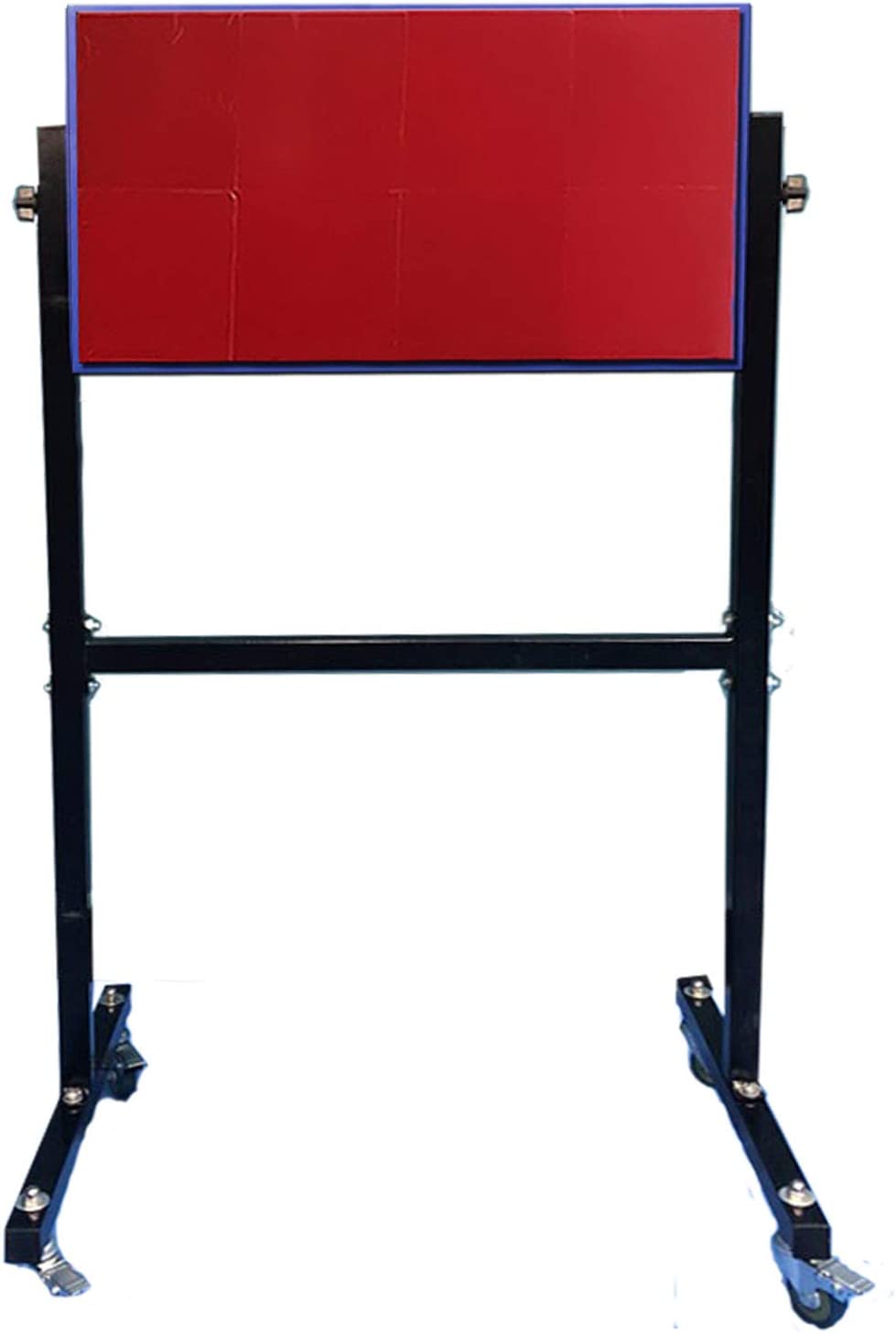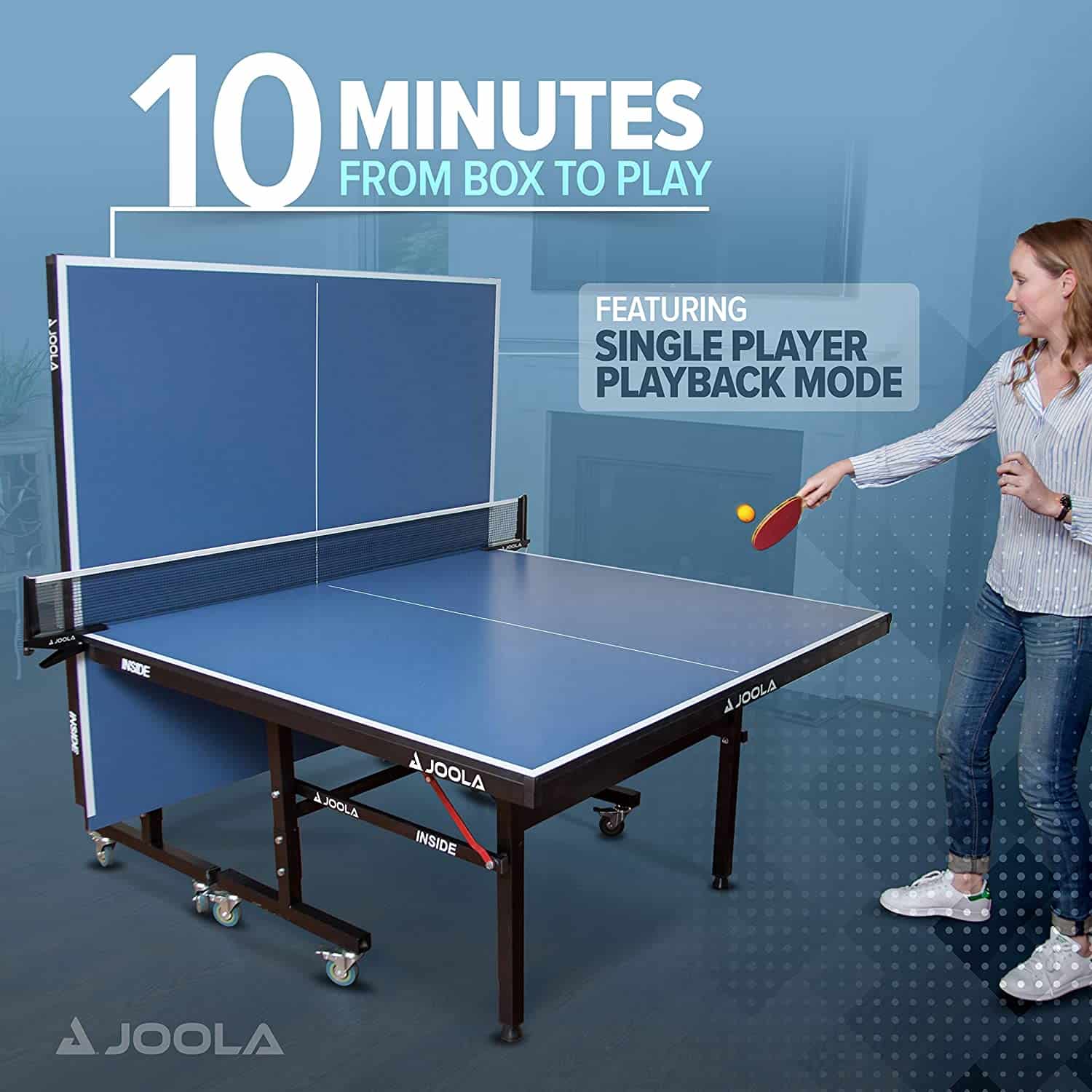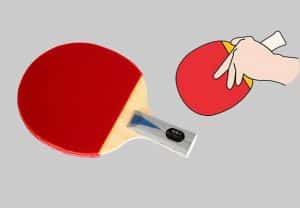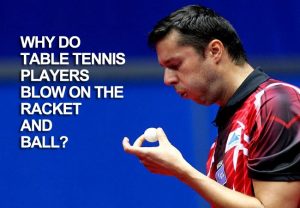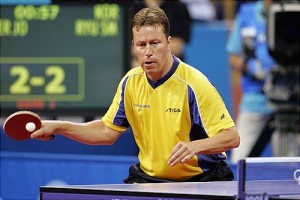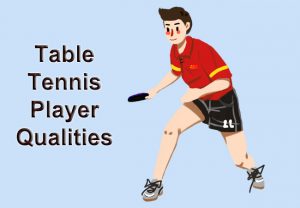While you typically want to train with a coach or partner in ping pong, sometimes it’s impossible. For the occasions when no one is free to play, or you just want to get out there and practice, believe it or not, you can do so on your own.
Wondering how to practice ping pong yourself? There are 6 ways plus another 4 techniques, including:
- Practice robots
- Using a return board
- Using solo playback mode
- Serving and bouncing solo
- Shadow play
- Bouncing a ball on your paddle
- Physical training
- Watching the pros
- Studying coaching materials
- Mental training
Though these methods may not be as fun as playing with (or against) someone, they will help you improve your skill level without a coach or training partner. I use most of these techniques from time to time, and they have served me well.
Read on to learn about all the techniques so you can choose the best for your next solo training session.
Table of Contents
6 Ways How to Practice Ping Pong by Yourself
While clearly, you can’t play a match against yourself, there are many ways to play ping pong alone to help further your game. Each has its benefits and drawbacks, but one thing is universal — all of these table tennis techniques will help you improve.
1. Purchase a Table Tennis Robot
The first method of practicing table tennis alone is using a table tennis robot. It is probably the best alternative to a real-life partner, but it is also quite expensive. The top models can cost up to $2,000.
However, you can purchase cheaper robots for around $200, which will also serve the purpose. Alternatively, you could pick up a preowned robot to save a bit of money. Whatever you choose to spend, table tennis robots are often worth the investment. I feel that they are one of the best ways to practice ping pong alone.
While robots are more suited to intermediate levels and below rather than professionals, elite players still use them too. For example, Samson Dubina, a top-rated United States player and coach, uses the Robo-Pong from Newgy.
Practice robots are perfect for improving fundamental technique, especially looping against backspin. The Butterfly Amicus Professional Table Tennis Robot comes highly recommended. It can provide you with real-match scenarios, such as making service returns. However, unless you’re an advanced player, it’s major overkill. We prefer the Newgy 2040+ for most players. It’s far cheaper and has a range of features.
2. Purchase a Return Board
A return board is a piece of one-person ping pong apparatus that is rather similar to a robot. It’s essentially a large wooden board covered in table tennis rubbers: a huge table tennis paddle if you will. To use one, you strike balls into it, and with the correct angle, spin, and speed, you can start to get rallies going. In a way, return boards are the truest form of playing against yourself, because the balls you receive directly result from your prior shot.
However, they rely on accuracy and consistency while you can get some good rallies going with them. This means they are not the best picks for beginners. They also don’t allow for much variation in your shots which is pretty restrictive for advanced players. Personally, we prefer table tennis robots, but return boards are certainly a great training tool in their own right. They also have the advantage of being cheaper than most robots.
One of the top return boards you can get right now is made by a company called yuanclllp. It stands on wheels, making it easy to move, and it is 4
3. Using Solo Playback Mode
Most ping pong tables these days have a feature called solo playback mode. This involves erecting one side of a table tennis table so that you have it partially open. This gives you a vertical surface to strike the ball against to practice your shots. While the usage of solo playback mode is very limited, it’s perfect for beginners to play ping pong alone to develop the basics of timing, spin, speed, and movement.
You can practice backspin, topspin shots, and even sidespin if you wish. What’s more, if you use a two-piece table rather than a one-piece table, you can gradually move the vertical side further away from the open side. This reduces your margin for error, forcing you to produce higher-quality shots. The JOOLA Inside 18 is a great example of a 2-piece table with solo playback mode. At 18 mm thick, it’s perfect for intermediate players and below.
4. Practice Serving and Bouncing on Your Own
While serving practice can seem tedious, it is a very important ping pong solo activity, and most players simply don’t dedicate enough time to it. By practicing away from match play, you can try techniques you wouldn’t usually go for or refine your current serves.
All you really need is a bucket of balls; the rest is up to you. You don’t need any other gear but certain equipment can help. For instance, if you’re working on accuracy, small cones can be helpful. See how many cones you can initially knock down from 10 serves, then repeat each session and track improvements.
I also recommend drilling short serves often as many serves drift longer than we think! Find the optimal point where your serve’s second bounce bounces near your opponent’s end line.
Here is a set of 120 JOOLA training balls for a crazy cheap price. If you go for this bundle, you’re set for a damn long time!
5. Practice Shadow Play
Shadow play is a great way of playing ping pong alone to improve your stroke techniques. As there is no ball in play, you’re not pressurized to quickly play your shot. This enables you to take the time to really think about textbook form and critique any mistakes you might be making. You can perform shadow play beside a table tennis table, this helps with positioning. However, another good option is to do it opposite a mirror. It’s much easier to highlight mistakes when you can see your technique rather than just feel it.
If you don’t have a mirror, another option is to record yourself. This is perhaps an even more useful tool as you can slow down footage to be extra perceptive.
6. Practice Bouncing a Ball on Your Paddle
The final way how to play ping pong by yourself is to train to bounce a ball on your table tennis paddle. Although it can seem fairly basic, it is a great way to improve as a beginner, especially if you don’t have experience with other racket sports. You can practice both keeping the ball up for as long as you can on your forehand and then for as long as you can on your backhand. When you become comfortable with both, try alternating between forehand and backhand after every hit — this is far more difficult!
Another way to introduce a bit more difficulty is to introduce some spin. Cut the ball sideways to produce sidespin, and then control the ball until the sidespin has dissipated. I like this ping pong practice technique for beginners as spin takes a while to get your head around, so it’s good to practice against it as much as possible.
Read More: Basic Types of Table Tennis Equipment
Other Exercises
1. Engage in Physical Training
If you don’t have a partner to practice table tennis with, you can still engage in physical training to build endurance, strength, and other qualities. For instance, doing drills with ladders or mini-hurdles will help improve your endurance, speed, and agility.
Weight training is another good option to build explosive power. For this, you should stick to low rep ranges and focus on explosive pushing movements. Such training will improve your smashing and power looping ability.
2. Watch the Professionals Play
If you don’t have a partner to practice with, watching others play the sport is an excellent solo ping pong activity. You can learn a lot from observing professional ping pong players in action. Study their movements and then go back to the table and practice them yourself. It is a great way to pick up a few tips and tricks from the masters!
There are many ways to watch the pros, including the World Tour. Not only can you learn a lot from the technique of professional players, but you can also learn a lot about strategy. Pros are experts when it comes to adapting their games to beat opponents. And by understanding how and why they switched to their strategy, you can begin to develop the skill for yourself.
3. Study Coaching Material
With the ever-increasing expansion of social media and online content, more valuable table tennis information is available than ever before. So take advantage of it! We have many blog posts dedicated to helping you improve as players, and there are other excellent resources you should consider checking out. We feel that coaching videos, in particular, are very effective tools, and most are free. Our favorites include Tom Lodziak, Ping Skills, and Dynamic Table Tennis TV.
4. Practice Mental Training
If you’re truly serious about excelling in table tennis, you should incorporate some form of mental table tennis training into your regimen. Skills such as goal-setting, self-motivation, and visualization are crucial to maximizing your performance.
Successful athletes in any sport choose and maintain a positive attitude, set high (yet realistic) goals, and use positive mental imagery. This puts them in the perfect head space during matches to perform to the best of their ability. They can also keep composed even if they are trailing far behind in a game or match. We’ve all probably seen a player or two lose their composure, which never ends well for said player. Once your head is gone, it’s very hard to make a comeback!
Conclusion
We hope you found our techniques for practicing ping pong by yourself useful. This is by no means a complete list. I’m sure there are other table tennis drills for one person out there that you could use, but these are the ones that stood out to us.
So the next time you find yourself without a partner, and think about giving table tennis a miss, change that attitude! As you’ve seen, you can do plenty to improve your performance. And the more hours you put in, the better you will become!

